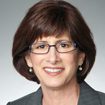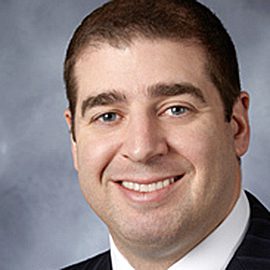101 Best and Brightest Metro Detroit Companies Show Dedication to Employees
Oct. 6, 2011 - How do the best of the best companies treat their employees in the face of economic uncertainty? Very well, actually. Instead of slicing away benefits, drastically downsizing payrolls, and such, they engage in proactive, positive programs designed to improve health and wellness, keep their employees informed and engaged, and many continue to pay competitive wages.
To Grow or Not to Grow?
Sept. 29, 2011 - Growing a business is tough. It is an art and never goes in a straight line. Like building a house, you cannot build the first and second floor until the foundation is set - and the key ingredients to a strong foundation are talent and technology.
Moving Your Business: Make a List, Check it Twice
Sept. 29, 2011 - When it comes to making a move, it is all about making a list and checking it twice, at least. Meet all the requirements before you move, otherwise the tiniest details could become major obstacles.
CIOs Critical to Effective Project Management
Sept. 29, 2011 - Today's CIOs are in a position to affect the positive outcome of an organization's projects and portfolios, and the best way for them to achieve better results is to know what information to scrutinize and to develop the best strategy to access the most relevant and accurate data.
A Strong Compliance Engine Is Not An Option
Sept. 29, 2011 - Organizations are now discovering that compliance management systems are extremely useful tools that provide evidence of compliance to regulators and also greatly improve their operational efficiency. They also reduce cost of compliance - and increase sales.
Healthy Eating, Healthy Employees, Better Bottom Line
Sept. 29, 2011 - We've all been there. There's a crunch at the office and we're dead tired - so we grab some junk food and soldier on-¦ adding even more pounds to our all-too-often sedentary bods. The FruitGuys have an alternative - a healthy alternative - and they may be heading to your office to share it with you.
Why Cloud Computing Must Evolveâ¨
Sept. 15, 2011 - Businesses need data-management technology that can effectively access data in any format, distributed anywhere across global computing networks. A key concern will become whether Cloud databases can overcome scaling and performance issues that have plagued conventional databases for years.
Low Latency Becomes Increasingly Critical in Every Industry
Sept. 15, 2011 - Speed is increasingly on the "short list" for network must haves. Find out why 88 percent of IT decision makers cite low latency as one of the most important qualities of their network.
Improving the ‘Tooth-to-Tail’ Ratio
Sept. 15, 2011 - Global climate change is a reality that will affect more than the weather and sea levels. It may well cause social disruption in countries that have reduced water and food supplies and growing populations. For that reason, among others, the defense establishment is looking at potential changes in the way it provides for our safety at home and abroad.
Social Media Policies Protect Benefits, Reduce Threats
Sept. 15, 2011 - To restrict all or allow all access to social media-¦ that is the question. As employees grow to expect access to Facebook, Twitter and Google+ in the workplace, companies need to develop and enforce social media policies that allow for the benefits of social media while protecting both themselves and their employees against its threats.
Harness the Business Power of Smartphones, Tablets
Sept. 15, 2011 - It is expected that smartphones and tablets will reach 10 billion units in the next 5 years. These devices represent a profound opportunity for organizations to rethink and impact change like never before. But making this leap requires some understanding of what this platform can do.
Matthew Moroun Speaks out Against a New Bridge: Leave Crossings to the Private Sector,...
Sept. 8, 2011 - In an interview with Corp! on the controversial new bridge proposal, Matthew Moroun, vice chairman of the Detroit International Bridge Co., says, "The best outcome is to continue with the success that we as a region have had with southeastern Michigan border crossings for the last 80 years, especially with the Ambassador Bridge, where no taxpayer resources or government resources have been used whatsoever ..."
Know Before You Grow: Key Resources for Learning About Your Customers and Competitors
Sept. 1, 2011 - Whether you're starting a business, introducing new products or services, or adding locations, it's always a good idea to first do your research and show that you have a solid understanding of your target markets. A good start is researching business and market information about places - including demographics and the economic, political, social, and other issues that make each market unique.
Your Online Address: A Threat and an Opportunity
Sept. 1, 2011 - The company that manages the global Internet address system -Â the International Corporation for Assigned Names and Numbers (ICANN) -Â recently approved two changes to the domain name system that could significantly impact your online business model. One represents a potential threat to your company's brand identity that can be avoided with prompt action. The other represents an expensive, but potentially valuable, e-branding opportunity.
Businesses, Communities, Futures Thrive With Diversity
July/August 2011 - Michigan has been a very diverse state for decades -Â thanks to the legacy of the automotive and related industries that offered high-paying jobs to both immigrants and natural-born citizens -Â though ethnic and racial divisions and discrimination led to strife and segregation.
My Hovercraft is Full of Eels
U.S. Supreme Court Sets Clear Rule on Primary Liability in Private Securities Law Actions
Chicago’s 101 Best and Brightest Companies To Work For Put Creativity in Valuing Employees
Aug. 18, 2011 -Â To have people not only committed to their jobs but thriving in the workplace is an HR dream, and no light feat for businesses anywhere. Chicago's 101 Best and Brightest Companies to Work For have found generous and creative ways to show they value their employees.
Get the Employee Performance You Want
Aug. 18, 2011 - Are you getting the performance you need from your employees? Do you throw training at a problem and keep your fingers crossed that performance will improve? Learn how to improve employee performance and achieve your business goals with the simplest, most cost effective solution.
Cash-Flow Plumbing Fix the Leaks
Aug. 18, 2011 - Fix those cash flow leaks from excessive processing or lost opportunities so cash flows smoothly through your organization. Leaks are not only missed opportunities for cost savings but also missed opportunities to speed up your inflow or slow down your outflow of cash - the hidden costs of cash flow leaks.
























